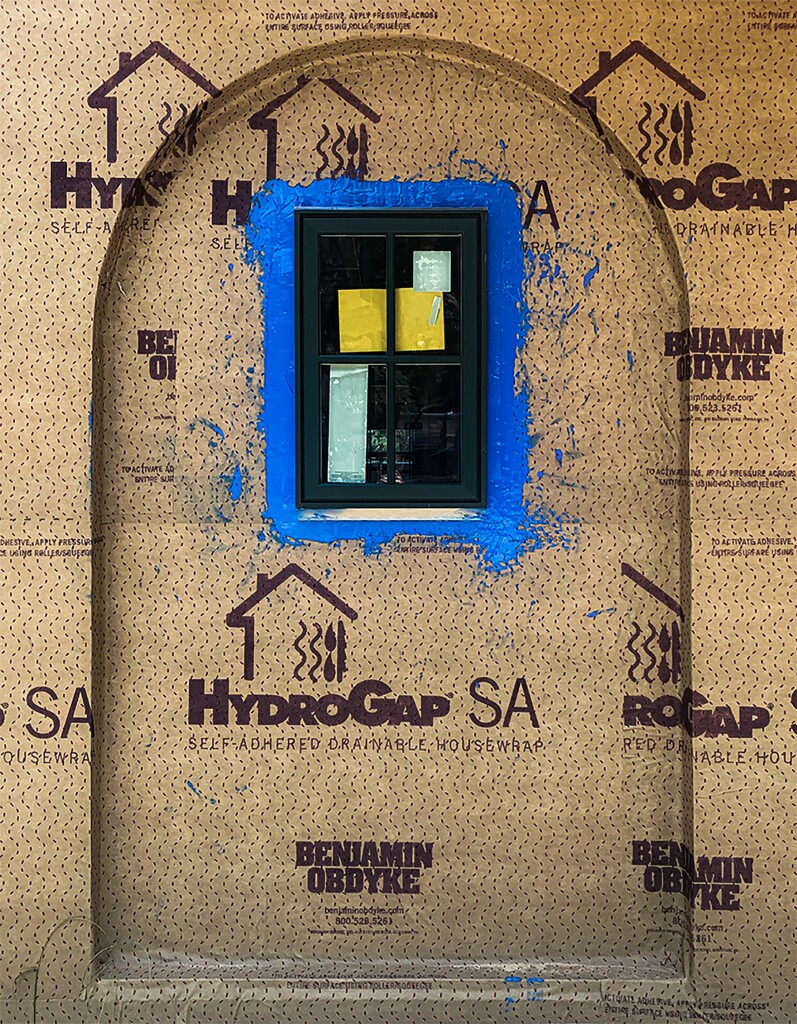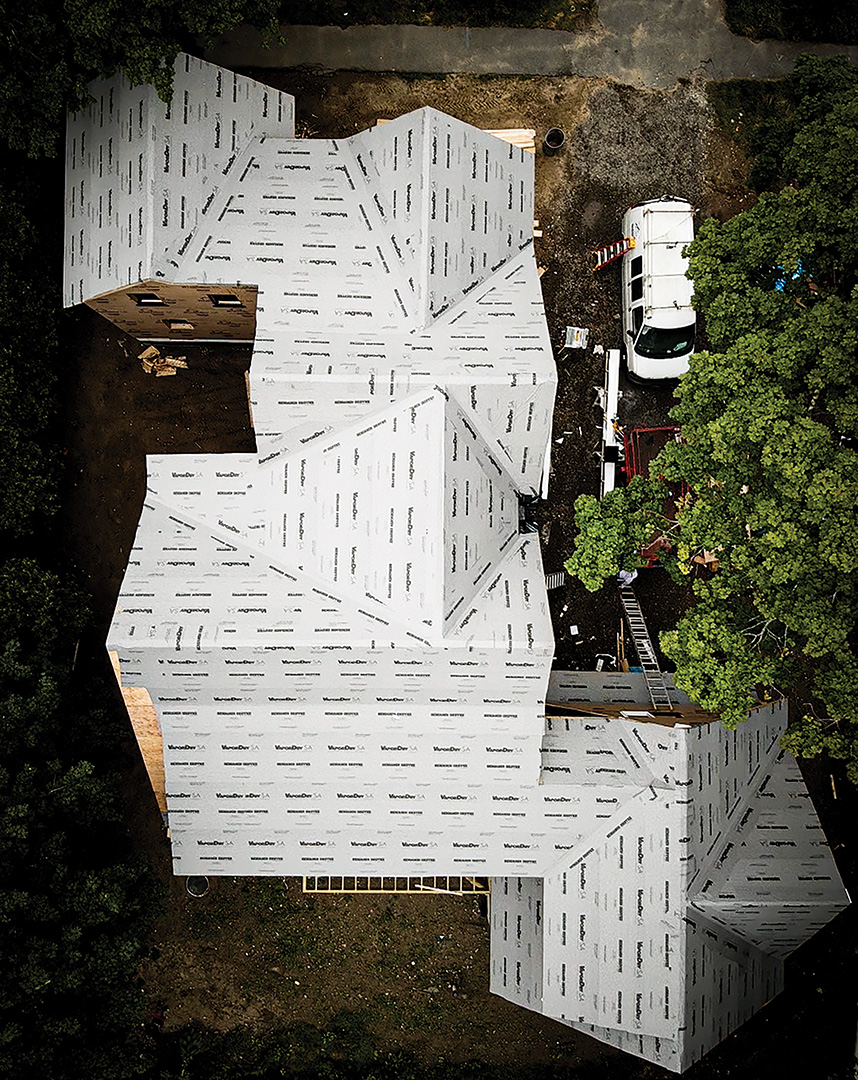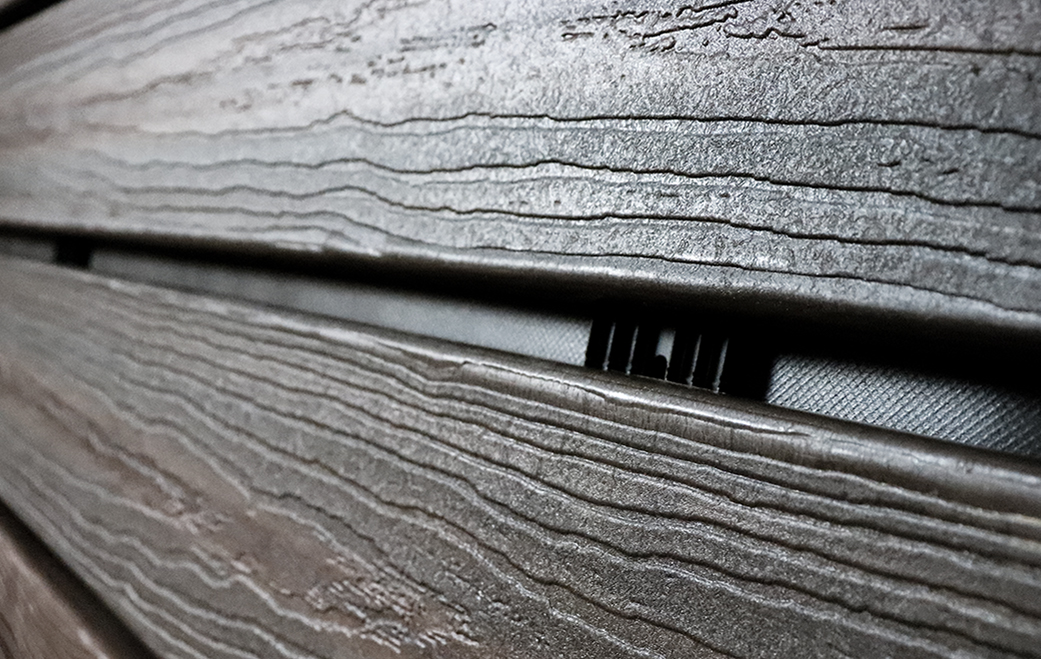One of the fundamental aspects to consider when building homes is the concept of the building envelope’s control layers. The four control layers—water, air, vapor, and thermal—serve as the main protection against various environmental elements, ensuring the integrity and longevity of the homes you build. Therefore, it is essential to understand each layer and its order of importance when making decisions for installation details and integrations of the roof and wall.
In order of importance, we’ll delve into the four control layers and explore their roles, interactions, challenges, and solutions.
1. Water Control Layer
Water is the primary adversary of any building structure. When water infiltrates the building envelope, it can lead to severe damage of the wood sheathing and framing within, including mold growth, rot, and degradation. Therefore, establishing a robust water control layer is the most vital. This layer includes materials and strategies designed to promote drainage and prevent water penetration into the building assemblies—such as properly installed and sequenced weather-resistant barriers (WRBs), flashing systems, and effective drainage solutions.
We always recommend your water control layer include a ventilation space to help facilitate water and vapor movement and to ensure proper drainage out of the building envelope. We offer a variety of water control layer solutions like our FlatWrap HP, HydroGap drainable housewrap, and siding rainscreen systems.

HydroGap SA Samples
GET YOUR FREE SAMPLES TODAY OF THE FIRST EVER SELF-ADHERED DRAINABLE HOUSEWRAP
2. Air Control Layer
Controlling airflow is crucial for optimizing energy performance and preventing moisture-related issues within the building envelope. The air control layer comprises barriers that seal the building to regulate air movement in and out and help prevent moisture condensation.
Achieving the desired air changes per hour (ACH) rating is essential for reducing energy loss and maintaining indoor air quality. Common air barrier materials include membranes, tapes, and sealants applied to the sheathing and building surfaces to create a continuous seal. The air control layer provides a seal within the building to regulate airflow, helping the home achieve the ideal ACH rating required to meet code, which helps reduce the energy used to condition the interior air.
Our HydroGap SA can act as part of an air control layer in addition to a water control layer because of its self-sealing continuous acrylic adhesive backing. It also includes 1mm spacers that create a true space for drainage, allowing you to design an air and water control layer in one.
3. Vapor Control Layer
Vapor, moisture in its airborne form, can infiltrate building assemblies and cause problems if not properly managed. The vapor control layer addresses this challenge by controlling the movement of water vapor through the building envelope. Vapor barriers or retarders allow moisture vapor to pass through while preventing excessive accumulation and condensation within the assembly. This layer helps mitigate the risk of moisture-related issues, particularly in colder climates where vapor drive is more pronounced. If vapor becomes trapped in an assembly, it can condense and return to liquid water, leading to mold and rot.
All our self-adhered underlayments, like HydroGap SA and VaporDry SA, are vapor permeable and can provide optimal advantages to vapor control for every climate.
4. Thermal Control Layer
Often referred to as the building’s “blanket,” the thermal control layer consists of insulation materials that temper thermal energy transfer to help regulate temperature and prevent energy loss. One measure of a thermal control layer is its resistance to heat flow, known as the R-value. Along with cavity insulation, building codes in some climate zones include new requirements for exterior insulation to help reduce thermal bridging through the framing and bolster R-values. This makes the water control layer even more vital in these tight assemblies with limited airflow.
Proper insulation helps maintain comfortable indoor temperatures, reduces heat loss or gain, and enhances energy efficiency. By minimizing thermal bridging and ensuring uniform insulation coverage, the thermal control layer contributes significantly to the overall performance of the building envelope.
How the Control Layers Work Together
The four control layers should not function alone but rather work in tandem to create a resilient building envelope. While each layer serves a specific purpose, they often overlap both physically and in functionality, and each material and product must be compatible with the other. In addition, each building envelope control layer is rarely made up of a single material or component. Instead, it is constructed from multiple components, transitioning between different materials or elements from the roof assembly to the wall assembly. When all control layers are properly integrated and executed, they prolong the lifespan of the building and enhance its durability and sustainability.
Where Challenges Arise with Your Control Layers
Despite the importance of control layers, challenges such as poor planning and execution can compromise their effectiveness. Thorough planning of materials and sequencing during the design and preconstruction phase, along with clear communication, is essential to identifying appropriate materials and detailing for each layer. Moreover, careful execution during construction, with attention to detail and adherence to design layout, is critical for maintaining the integrity of the control layers and mitigating vulnerabilities.
Build Better by Understanding your Building Envelope Control Layers
By prioritizing water, air, vapor, and thermal control in your design and construction processes, you can mitigate risks, optimize energy efficiency, and ensure the long-term performance of your homes. With proper planning, execution, and utilization of innovative products, you can help ensure the performance of your building envelope and the safety of the occupants inside.
Explore our products and how they can work together as control layers for your building envelope or get in contact with us today for one-on-one support.




